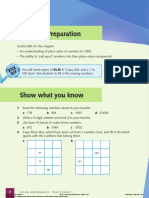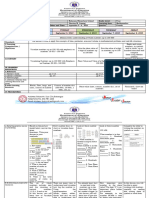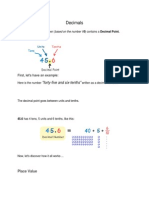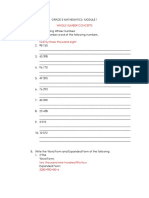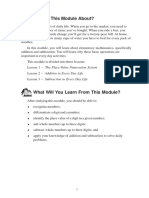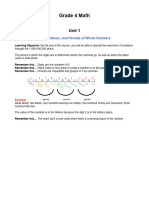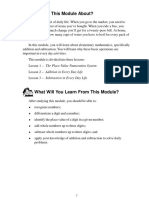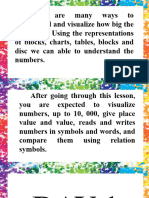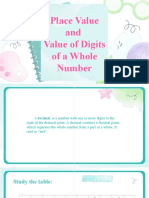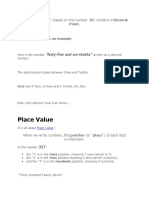0% found this document useful (0 votes)
45 views3 pagesMath Exercise 5 PLACE VALUE
The document explains place value in numbers, illustrating how each digit represents a specific value based on its position. It covers both whole numbers and decimal fractions, detailing how to determine the value of individual digits. Examples are provided to clarify the concept of place value in various numerical contexts.
Uploaded by
ben munjaruCopyright
© © All Rights Reserved
We take content rights seriously. If you suspect this is your content, claim it here.
Available Formats
Download as PDF, TXT or read online on Scribd
0% found this document useful (0 votes)
45 views3 pagesMath Exercise 5 PLACE VALUE
The document explains place value in numbers, illustrating how each digit represents a specific value based on its position. It covers both whole numbers and decimal fractions, detailing how to determine the value of individual digits. Examples are provided to clarify the concept of place value in various numerical contexts.
Uploaded by
ben munjaruCopyright
© © All Rights Reserved
We take content rights seriously. If you suspect this is your content, claim it here.
Available Formats
Download as PDF, TXT or read online on Scribd
/ 3
